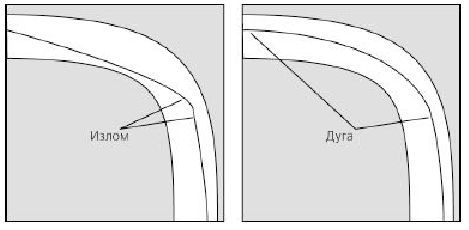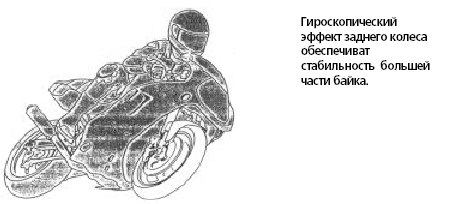  
 
 
 
 
 
 
 
 
 
 
 
 
  

|
The Chapter 13. Taxiing - back sprocket
For a motorcycle two gyros - forward sprocket and back. What each of them
influences? What from them turns actually? Forward, so you see? And yes,
also no.
Actually, while on a control surface the force acts, the motorcycle is
tilted. It follows from the physical laws and engineering principles which
were go bed up in a design bike. However, as soon as force ceases to act (motorcycle
is inclined on a corner indispensable for turn) a back sprocket turns bike.
That is the forward sprocket "turns" bike, tilts it, but as soon as
motorcycle has inclined and was stabilized, back - more massive - the part
bike determines angle of lean.
The forward sprocket can jump up or be rocked, but it in any way does not
hinder back to support angle of lean. Thus, to compress a control surface is
completely useless. And then, it harms to a controllability, as we saw in
section " Landing of the driver ".
If you correctly operate gas, alone, that can change angle of lean - loss
of coupling with a road or taxiing. The apparent evidence - wheelie on
escaping of turn. The angle of lean bike is saved, though the forward
sprocket has lifted off!
The responsibilities of a forward sprocket
As soon as motorcycle is completely inclined in turn, the forward
sprocket ceases to influence taxiing. It helps to support a stable rule, but
does not taxi. But the forward sprocket has one more relevant problem - to
bear 30-40 % of weight bike. These percents influence speed of transit of
turn. Differently, if you will throw these percents on a back sprocket, you
receive sideslip.
During taxiing you aim to load, that bike could be linked for a
road and turn. Therefore try to not open gas earlier, than it is not
necessary, differently bike can take advantage of advantages, which one
gives to him correctly loaded front.

Incorrect timing
Let's consider turns with irregularities, for example, turn ¹7 on Road
America, with a hole is direct near to an apex. The racers do not open gas,
yet driving this hole. 95 % from them thinks, that if on the down faulted gas
the motorcycle yaws, he begins to yaw even more if to add gas. Actually, all
to the contrary help one can only - discovering of gas.
That fact, that an afterpiece bike responds for stability, when is
inclined, helps to manage this turn and with many other problems. It is not
necessary to attempt to set up the suspension under turn ¹7, it is empty
spending of time. In addition, the racer becomes too cautious, interfere
withing a situation, which one does not perceive. From an anticipation of a
problem it becomes only worse.

Set-up of the suspension
As soon as you perceive, that for stability the afterpiece responds,
to you becomes more lighter to set up the suspension. So much
weights are necessary equally to stabilize themselves. It is too much - and
the control surface will be sharp, it is not enough - and the control
surface will be wadded. But if all is customized correctly - forward
sprocket as bounds for, given back sprocket.
It is difficult to turn off, when the forward sprocket jumps on knolls.
It is type SPI - you wait for jerkiness and do not add gas. Try to start up
bike in slip and here to hunt, should help. However do not apply this method
in each turn, he demands that at first bike was turned correctly around. DG
|